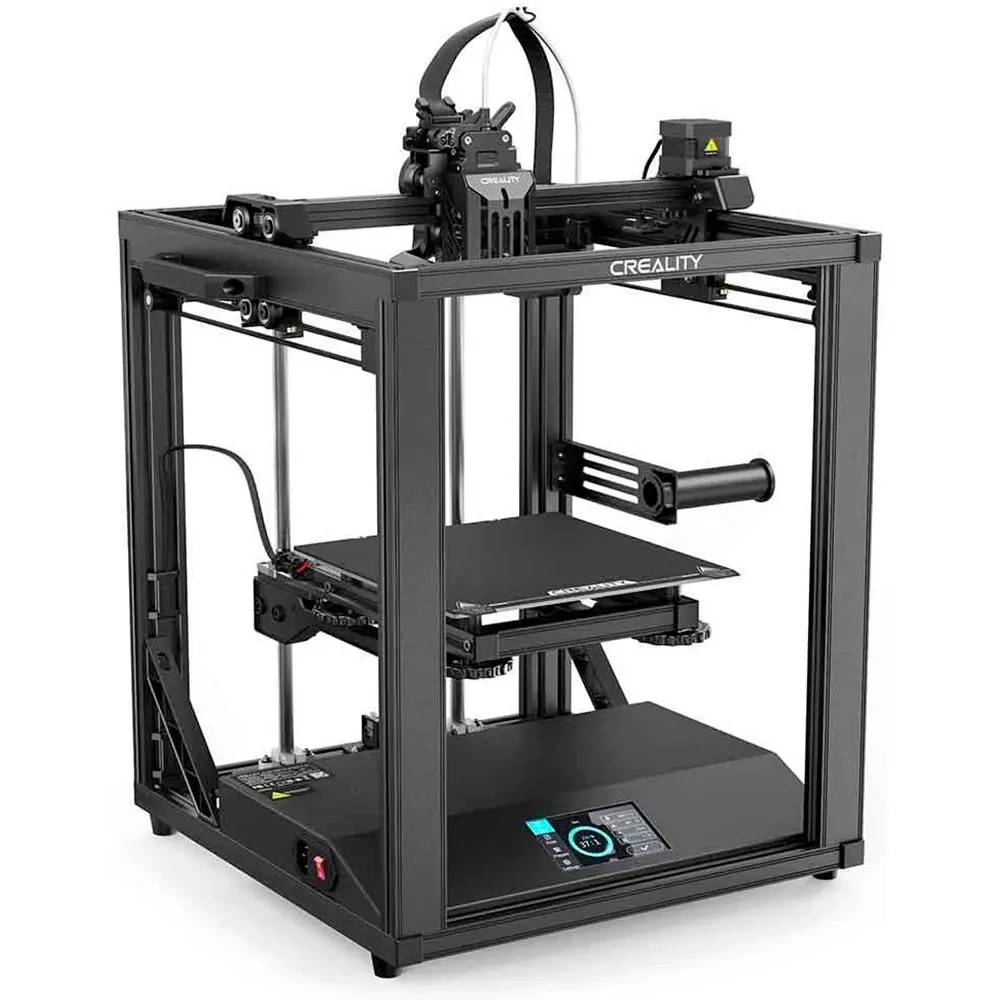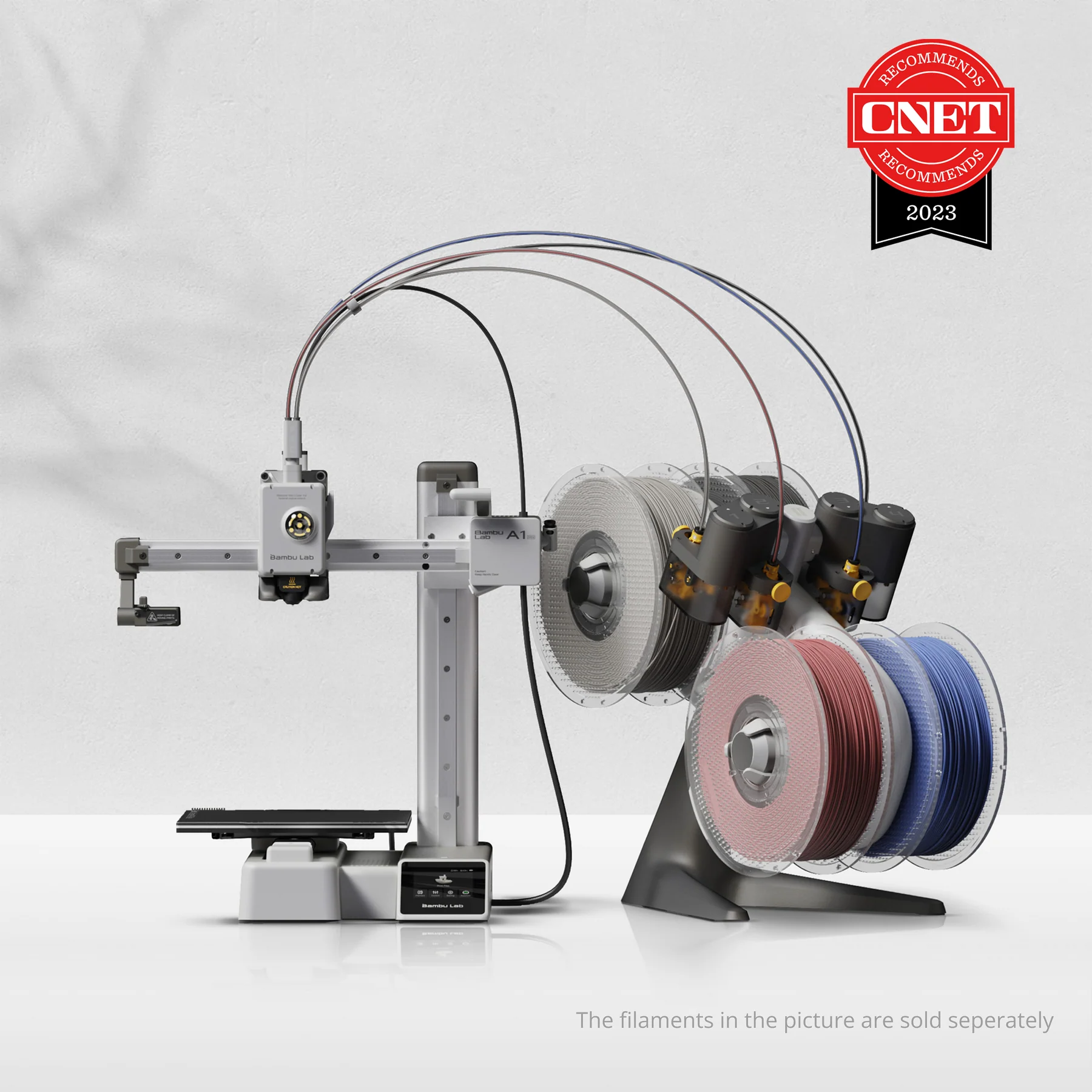Compare Ender 5 S1 vs A1 Mini
Comparison between the best 3D printers
Choose the best 3D printer at the best price. The cheapest 3D printers are here.
Buy a 3D printer here with 3D Fila.
 |
 |
|
| Model | Ender 5 S1 |
A1 Mini |
| Printing Material | Filament | Filament |
| Buy Filament for Creality 3D Ender 5 S1 | Buy Filament forBambu Lab A1 Mini | |
| Estimated price | $467,00 | $549,00 |
| Manufacturer | Creality 3D | Bambu Lab |
| Release Year | 2022 | 2023 |
| Print Volume [mm] | 220x220x280 | 180x180x180 |
| Printer Size [mm] | 425x460x570 | 315x347x365 |
| Weight [kg] | 12,1 | 5,5 |
| Power Loss Recovery | YES | YES |
| Enclosed printer | NO | NO |
| Bed Leveling | Automatic | Automatic |
| Filament End Sensor | YES | YES |
| Bed type | Heated | Heated |
| Power supply system | Direct Drive | Direct Drive |
| Standard nozzle | 0,4 | 0,4 |
| Maximum Nozzle Temperature [°C] | 300 | 300 |
| Maximum Bed Temperature [°C] | 110 | 80 |
| Maximum printing speed [mm/s] | 250 | 500 |
| Filament holder | YES | YES |
| Camera for supervision | NO | NO |
| Recommended filaments | PLA, ABS, PETG, TPU, PC, ASA, HIPS | PLA, PETG, TPU, PVA |
| Recommended slicers | Cura, Simplify, Slic3r, IdeaMaker | Bambu Studio, Super Slicer, Cura, Prusa Slicer, Orca |
| Maximum Resolution [mm] | 0,05 | 0,1 |
| Processor | 32 Bits | 32-bit Silenciosa |
| Display | Display touchscreen 4,3 '' | Touchscreen 2,4'' |
| Power Supply | 350 W | 150 W |
| Connectivity | SD / USB / Wi-Fi | Wifi, Bambu bus, Cartão SD |
| Operating systems | Windows, Mac, Linux | Windows, Linux, Macbook |
| Date of registration in the system | 2023-10-04 | 2024-04-10 |
| Release date | 2022 | 2023 |
| Extra features | A steel drive shaft synchronizes the two Y-axis belts. High-torque 42-48 Y-axis motor for responsive and precise movement. Cartesian structure. Enhanced stability by thick linear shafts, extra stiffeners, two cantilevers, and silicone bumpers. Double Die Spring profile reinforcement. Silicone bed support. All-metal Sprite direct extruder. Best for printing with flexible filaments like TPU. Auto-calibration with 16-point CR Touch. Compatible with Sonic Pad, Wifi Box, and Camera kit. | The Bambu Lab A1 Mini stands out not only for its impressive speed and automatic calibration, but also for its multi-color printing capability thanks to AMS Lite. This innovative system makes multi-color printing easy, making it accessible to everyone. AMS Lite, specific to the A1 Mini, supports up to four different materials simultaneously, providing creative freedom without complications. With comprehensive sensors for energy monitoring and recovery, a camera for timelapses and Wi-Fi control, the A1 Mini and AMS Lite together offer an intuitive and advanced 3D printing experience, ideal for materials such as PLA, PETG and TPU, and designed for simplicity and fast maintenance with quick-change nozzles. |
| Support for multiple colors and materials (AMS and CFS) | NO | YES |
Notes * |
||
| Cost-benefit | 7 / 10 | 7 / 10 |
| Hardware | 2.4 / 10 | 4.2 / 10 |
| Tela | . | . |
| Print volume | 3 / 10 | 3 / 10 |
| Performance | 2 / 10 | 4 / 10 |
Conclusion |
| In comparing the Ender 5 S1 and the Bambu Lab A1 Mini, both 3D printers offer robust features but cater to different user needs, which is crucial in determining the best option. The Ender 5 S1 boasts a larger print volume, making it suitable for larger projects and more versatile in application. It also incorporates a solid build with features like power loss recovery and a heated bed, ensuring consistent printing performance. While it may be slightly more affordable, its weight and size suggest it is geared more towards desktop use. Conversely, the A1 Mini presents itself as a more modern choice, offering advanced features such as multi-color printing with AMS Lite and a higher maximum printing speed. This printer emphasizes ease of use and quick maintenance, appealing particularly to those who value rapid prototyping and creativity with materials. Despite being more expensive, its time-saving attributes and intuitive operation may justify the investment for enthusiasts and professionals alike. Both printers have automatic bed leveling and use compatible filament types, making them user-friendly for a range of applications. Ultimately, the decision hinges on the intended use: the Ender 5 S1 may be better suited for users needing larger prints, while the A1 Mini could be ideal for those focused on speed and material versatility. Each printer has strengths and weaknesses that cater to different user preferences in the 3D printing landscape. |

